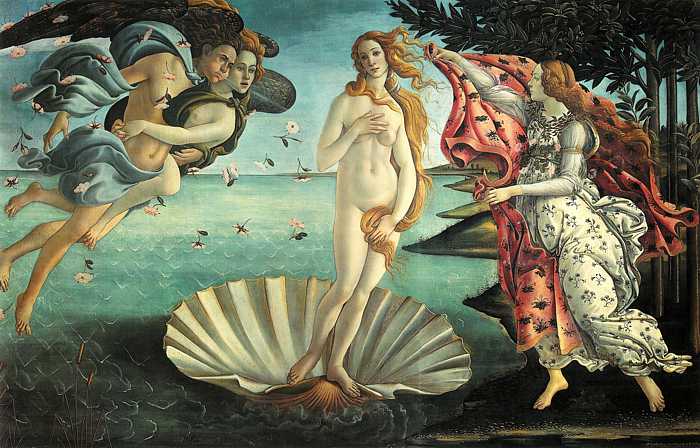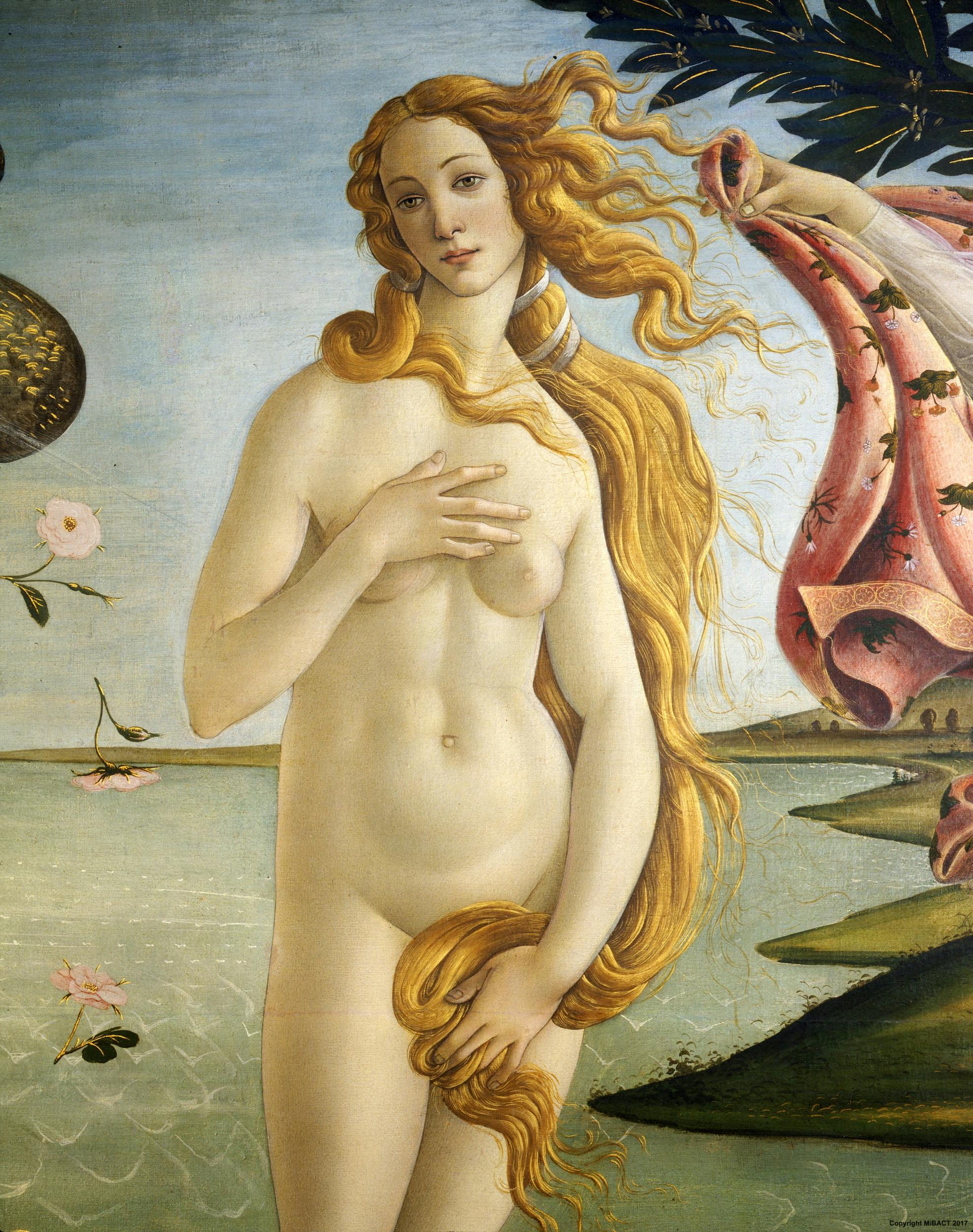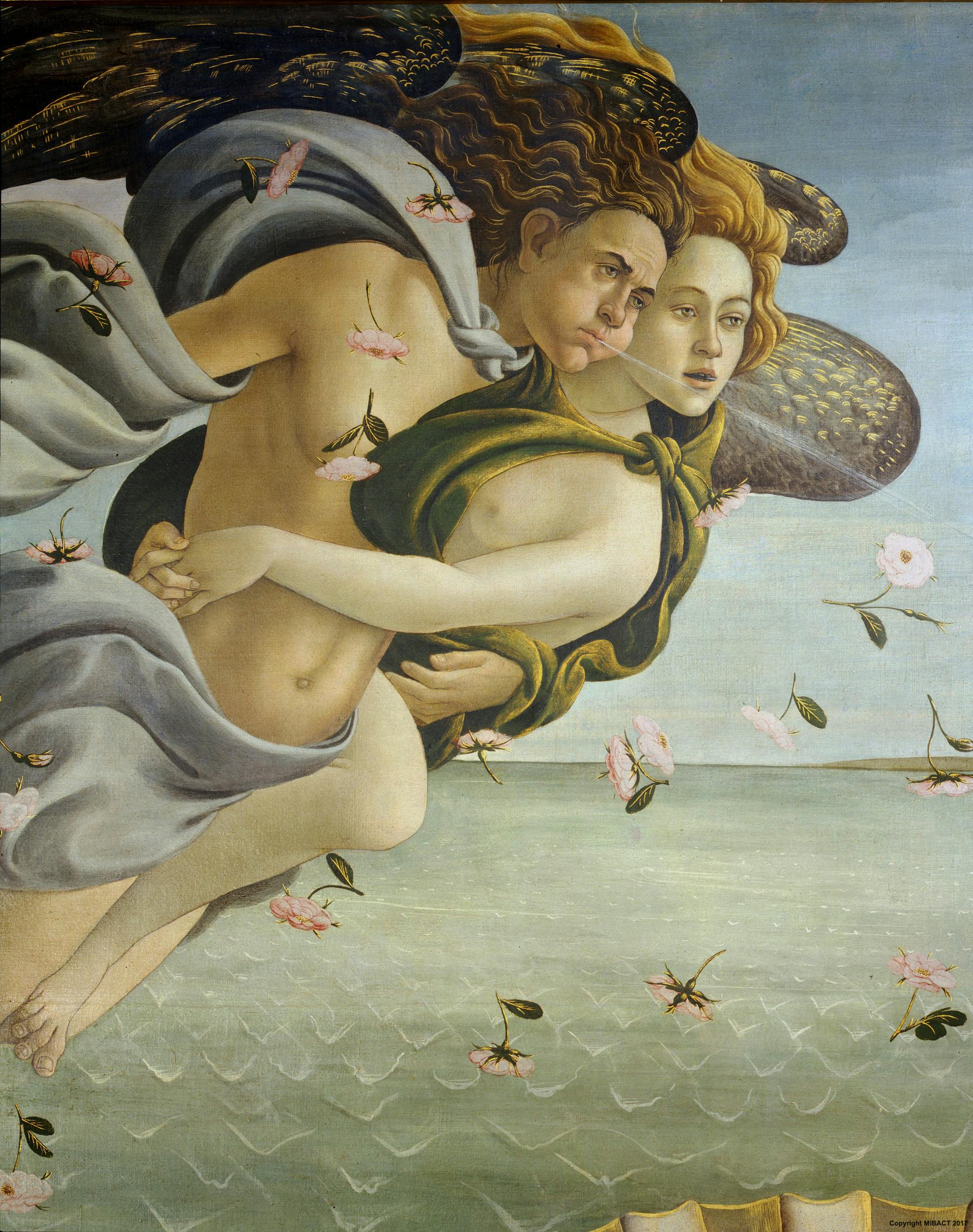The Renaissance
Painting Background
Sandro Botticelli painted the Birth of Venus in 1485. It was created with the technique tempera on canvas. During this time period ,wood panels were the “most popular surfaces for painting”, however the use of canvas was starting to “gain acceptance by painters” (“Botticelli’s Birth of Venus”). This was because the wood would warp in humidity and canvases cost less. Sandro Botticelli’s theme “celebrates Venus as symbol of love and beauty” and was “perhaps suggested by the poet Agnolo Poliziano” (Unknown). That was not the only influence that is seen in this painting, humanism is very apparent in this work. TheArtyfactory states that humanism had more” influence on its subject matter” and emphasizes more “on the pleasures and social values of the here and now" (“Italian Renaissance Art - Humanism”). Upon further research of this painting, there is supposed to be “an emblem of the Medici dynasty” within the orange trees in the painting (Unknown). This is based on the “account of the assonance between the family name and the name of the orange tree, which at the time was {mala medica}”( Unknown). This was in fact a commissioned piece for the Medici family, unfortunately it is not entirely certain which member.
Art appreciation
I would first like to get into the fact that this is one of my absolute favorite paintings. I was in awe when I first saw this painting at a younger age. I love the shading of her skin to show the contours of her face and body. Botticelli created this effect by using a “dark line around the contours of her body” which “made it easier to see her bodily forms against the background”(“Botticelli’s Birth of Venus”). There is highlighting to accentuate the light of the sun touching her pale skin. Her pose shows” inspiration from classical statues for Venus’ modest pose, as she covers her nakedness”(Unknown). Based on the flowers being repeated in a pattern I can assume that this is spring. Furthermore, apparently one of “the Graces or as the Hora of spring” is shown holding the cloth to cover Venus with (Unknown). This painting speaks to me as it exudes beauty in several ways from Venus’s beauty, the water waves as they push her ashore, the sky as the clouds highlighting around Venus making your attention drawn to her, and her hair and flowers blowing in the wind. I never noticed at first glance that “Zephyr” was blowing her guiding her ashore (Unknown). It is such a faint detail that you almost miss it while looking at her in the shell. Her expression is as if she is deep in thought, yet there’s a confidence about her. Her features are very feminine even her finger position on her chest. Zephyr’s expression is even impressive. It shows just how hard he is blowing the wind to Venus from the puffiness of his cheeks to the wrinkles of his brow.My absolute favorite thing about this painting is the gilded accents seen throughout the painting. Venus’s hair, “which has reflections of light” has been gilded along with the wind, Zephyr’s wings, the tree etching, the leaves, parts of the ground, and even her shell itself.
To truly appreciate this work of art you can click the link here to learn about Venus: https://www.historylink101.com/art/Sandro_Botticelli/pages/10_Birth_of_Venus_jpg.htm
References
“Botticelli’s Birth of Venus.” Italianrenaissance.org, 2015, http://www.italianrenaissance.org/botticelli-birth-of-venus/. Accessed 2021.
“Italian Renaissance Art - Humanism.” Artyfactory, https://www.artyfactory.com/art_appreciation/art_movements/italian-renaissance/italian-renaissance-art-humanism.html. Accessed 2021.
Unknown. Uffizi Galleries The Uffizi, Unknowm, https://www.uffizi.it/en/artworks/birth-of-venus#:~:text=Botticelli%20takes%20his%20inspiration%20from,a%20gem%20from%20the%20Hellenistic.



I could see that the painter also used lots of shading with different colors to emphasize each subject and put more life in the painting. It looks like the painter did a lot of work to make it look more real. Although, I don't understand the darker green color at the bottom left.
ReplyDelete